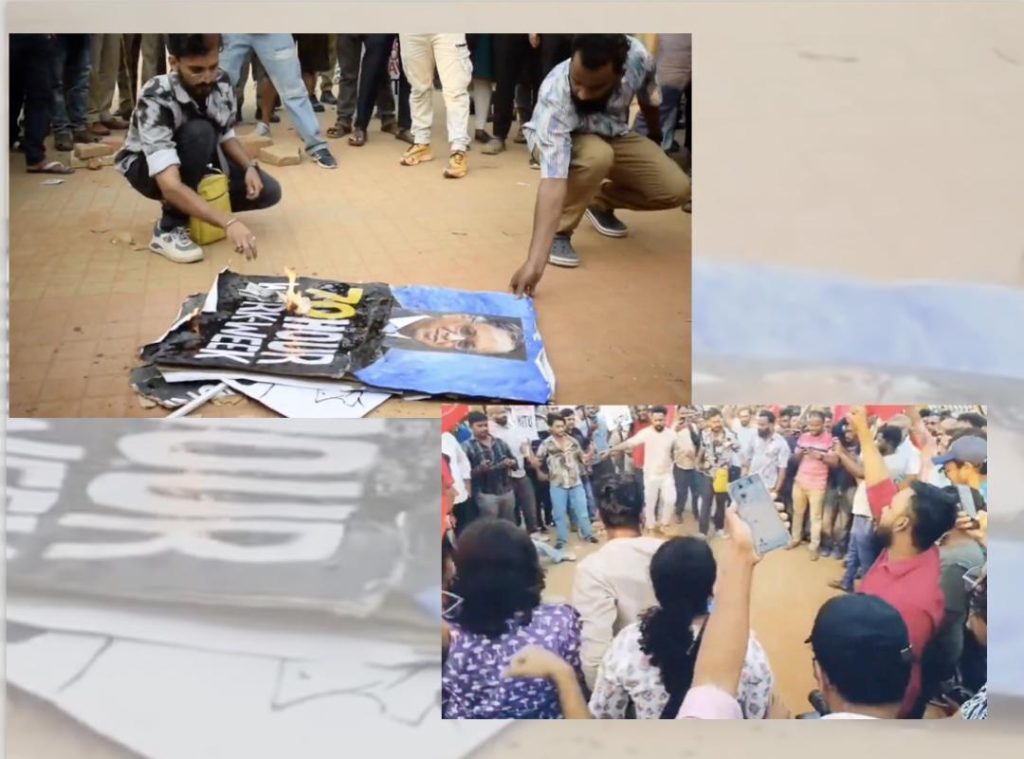
IT Employees Burn Murthy, L&T Chief’s Effigies for Proposing Longer Workweeks
The IT industry in Bengaluru has been abuzz with controversy lately, with two of the biggest names in the sector proposing longer workweeks for employees. Infosys Founder Narayana Murthy and L&T Chairman SN Subrahmanyan have sparked outrage among IT employees by suggesting that they work 70-hour and 90-hour weeks, respectively. The proposal has been met with widespread criticism, and the IT employees’ union in Karnataka, KITU, has taken a strong stand against it.
To express their displeasure, KITU organized a protest in Bengaluru, where IT employees gathered to burn effigies of Murthy and Subrahmanyan. The protest was held despite attempts by the Bengaluru Police to stop them, and the event turned out to be a powerful display of solidarity among IT employees.
The proposal for longer workweeks has been met with criticism from various quarters, with many arguing that it is a recipe for burnout and decreased productivity. The IT industry is notorious for its demanding work culture, and employees are already pushing the limits of their physical and mental endurance. Asking them to work longer hours without a corresponding increase in pay or benefits is seen as exploitative and unfair.
Murthy’s suggestion of a 70-hour workweek has been particularly controversial, given his own history of criticizing the excessive work culture in the IT industry. In the past, he has spoken out against the practice of making employees work long hours without adequate compensation or recognition. However, his recent proposal has been seen as a contradiction of his earlier stance.
Subrahmanyan’s suggestion of a 90-hour workweek has been met with even more outrage, with many arguing that it is nothing short of ridiculous. The chairman of L&T has defended his proposal, saying that it is necessary to ensure the company’s competitiveness in the global market. However, his argument has been dismissed by many as a excuse for exploiting employees.
The protest by KITU is seen as a significant development in the ongoing struggle by IT employees for better working conditions and fair treatment. The union has been vocal in its criticism of the industry’s exploitative practices, and its efforts to organize protests and demonstrations have been met with resistance from employers and the government.
The Bengaluru Police’s attempt to stop the protest is seen as a further example of the authorities’ failure to protect the rights of workers. The police have been accused of using excessive force to disperse the protesters, and several employees have been injured in the process.
The burning of effigies of Murthy and Subrahmanyan is a powerful symbol of the IT employees’ anger and frustration. The act is seen as a form of non-violent protest, and it is a way for employees to express their feelings and send a message to the industry leaders.
The controversy surrounding the proposal for longer workweeks has once again highlighted the need for change in the IT industry. It is time for employers to recognize the value of their employees and to treat them with respect and fairness. The proposal for longer workweeks is a step backward, and it is a reminder of the industry’s failure to learn from its past mistakes.
In conclusion, the protest by KITU and the burning of effigies of Murthy and Subrahmanyan are significant developments in the ongoing struggle by IT employees for better working conditions and fair treatment. The controversy surrounding the proposal for longer workweeks is a reminder of the industry’s exploitative practices and the need for change.






